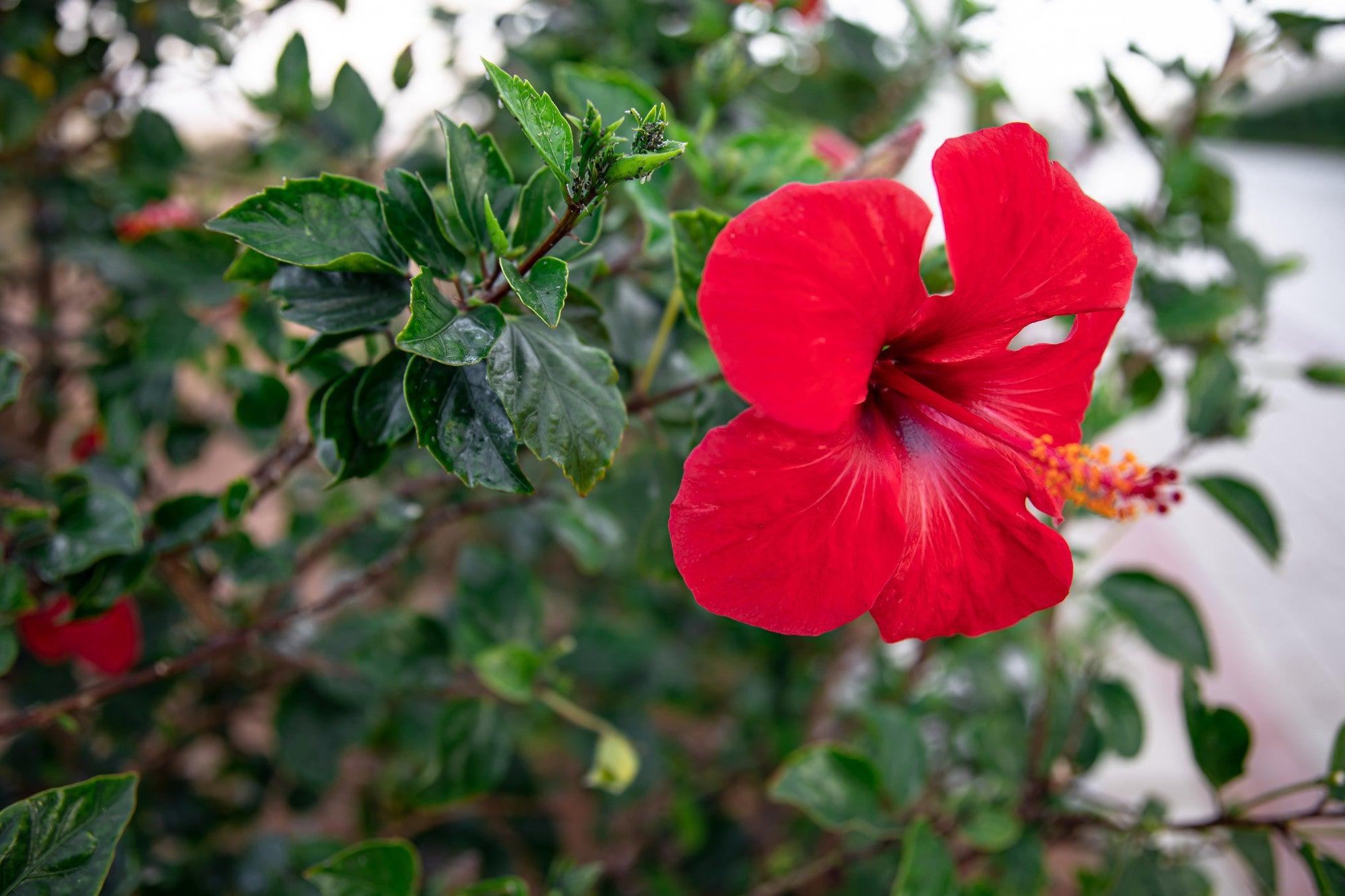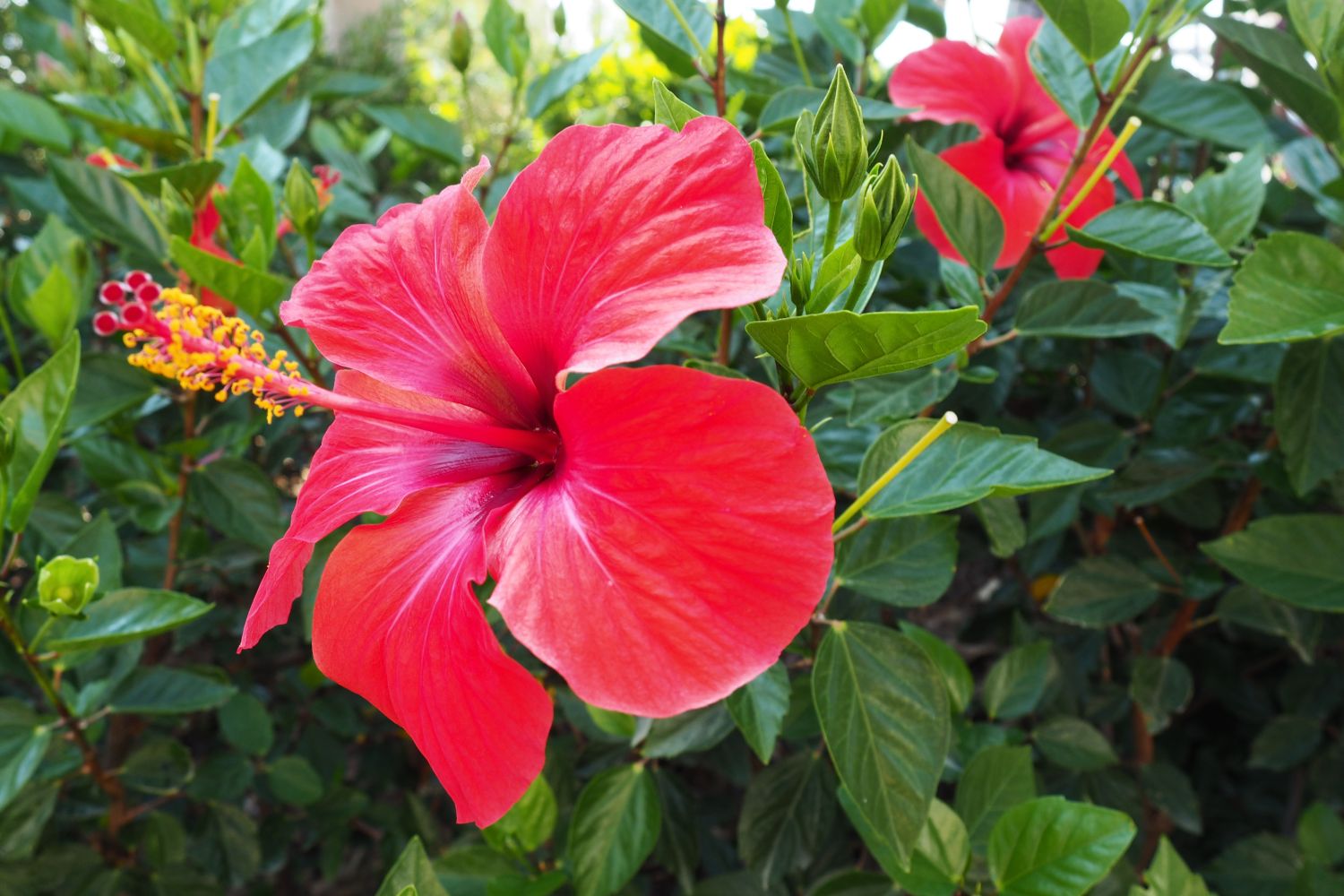
Hibiscus Flower Plant
The Beauty and Benefits of the Hibiscus Flower Plant
Introduction to Hibiscus Flower Plant
The Hibiscus flower plant, also known as Hibiscus rosa-sinensis, is a stunning and vibrant plant that can be found in various tropical and subtropical regions around the world. This plant is known for its large and colorful flowers, which come in a wide range of colors including red, pink, yellow, and orange.
Characteristics of the Hibiscus Flower Plant
The Hibiscus flower plant is a perennial shrub that can grow up to 15 feet tall. It has glossy green leaves and produces large, trumpet-shaped flowers that can measure up to 6 inches in diameter. These flowers have five petals and a prominent stamen in the center.
Growing Conditions for the Hibiscus Flower Plant
The Hibiscus flower plant thrives in warm and humid climates, making it an ideal plant for tropical and subtropical regions. It requires full sun to partial shade and well-draining soil to grow successfully. This plant is also sensitive to cold temperatures and should be protected from frost.
Care and Maintenance of the Hibiscus Flower Plant

To care for the Hibiscus flower plant, it is essential to water it regularly, especially during hot and dry periods. Fertilizing the plant with a balanced fertilizer every few weeks can also help promote healthy growth and vibrant blooms. Pruning can help shape the plant and encourage new growth.
Health Benefits of the Hibiscus Flower Plant
In addition to its beauty, the Hibiscus flower plant also offers various health benefits. The flowers of this plant are rich in antioxidants, which can help protect the body from free radicals and reduce inflammation. Hibiscus tea, made from the dried flowers, is often consumed for its potential health benefits.
Uses of the Hibiscus Flower Plant
The Hibiscus flower plant has been used for various purposes throughout history. In some cultures, the flowers are used to make natural dyes for fabrics and textiles. The petals are also used in traditional medicine to treat various ailments, including high blood pressure and digestive issues.
Symbolism of the Hibiscus Flower Plant
The Hibiscus flower plant holds different meanings and symbolism in various cultures around the world. In Hawaii, the Hibiscus flower is the state flower and symbolizes hospitality and friendship. In other cultures, the flower is associated with beauty, femininity, and love.
Common Varieties of the Hibiscus Flower Plant
There are many different varieties of the Hibiscus flower plant, each with its unique characteristics and colors. Some popular varieties include the Hibiscus rosa-sinensis, Hibiscus syriacus, and Hibiscus sabdariffa. Each variety has its unique growth habits and flower shapes.
Propagation of the Hibiscus Flower Plant
The Hibiscus flower plant can be propagated through various methods, including seeds, cuttings, and division. Seeds can be collected from the plant’s flowers and germinated indoors before planting outdoors. Cuttings can be taken from healthy stems and rooted in water or soil.
Common Pests and Diseases of the Hibiscus Flower Plant
The Hibiscus flower plant is susceptible to various pests and diseases, including aphids, whiteflies, and scale insects. These pests can cause damage to the plant’s leaves and flowers if left untreated. Common diseases include powdery mildew, leaf spot, and root rot.
Benefits of Growing the Hibiscus Flower Plant
Growing the Hibiscus flower plant can bring many benefits to a garden or landscape. The plant’s vibrant flowers add a pop of color to any space and attract pollinators such as bees and butterflies. The plant is also relatively low maintenance and can thrive in various growing conditions.
Harvesting and Using Hibiscus Flowers
To harvest Hibiscus flowers for culinary or medicinal purposes, wait until the flowers are fully open and at their peak freshness. Gently pluck the flowers from the plant, being careful not to damage the petals. The flowers can be used fresh or dried for later use.
Popular Hibiscus Flower Recipes
Hibiscus flowers can be used in a variety of culinary recipes, including teas, syrups, and desserts. Hibiscus tea is a popular beverage made by steeping dried Hibiscus flowers in hot water. Hibiscus syrup can be used to sweeten drinks or drizzled over pancakes and desserts.
Hibiscus Flower Plant in Folklore and Mythology
The Hibiscus flower plant has been featured in various folklore and mythology throughout history. In some cultures, the flower is believed to have magical properties and is used in rituals and ceremonies. The flower’s vibrant colors and unique shape have inspired many stories and myths.
Growing Hibiscus Flower Plant Indoors
The Hibiscus flower plant can also be grown indoors as a houseplant, as long as it receives enough sunlight and warmth. Choose a bright and sunny spot for the plant, such as a south-facing window. Water the plant when the top inch of soil feels dry to the touch.
Benefits of Hibiscus Flower Plant for the Skin
Hibiscus flowers contain natural acids that can help exfoliate and brighten the skin. Hibiscus-infused skincare products are known for their anti-aging properties and can help improve the appearance of fine lines and wrinkles. The flowers also have moisturizing and soothing properties.
Pruning and Shaping Hibiscus Flower Plant
Pruning Hibiscus flower plants can help promote healthy growth and encourage the plant to produce more flowers. Remove any dead or damaged branches, as well as any overgrown or leggy growth. Shape the plant by cutting back branches to maintain a desired size and shape.
Companion Plants for Hibiscus Flower Plant
When planting Hibiscus flowers in a garden or landscape, consider pairing them with companion plants that complement their growth habits and colors. Some suitable companion plants include lavender, salvia, and lantana. These plants can attract pollinators and provide a beautiful backdrop for the Hibiscus flowers.
Seasonal Care for Hibiscus Flower Plant
To ensure healthy growth and vibrant blooms, provide seasonal care for the Hibiscus flower plant throughout the year. In the spring, fertilize the plant to promote new growth. In the summer, water the plant regularly to prevent wilting. In the fall, protect the plant from cold temperatures and frost.
Common Myths and Misconceptions about Hibiscus Flower Plant
There are many myths and misconceptions surrounding the Hibiscus flower plant. One common myth is that Hibiscus flowers are toxic to pets, which is not true. Another misconception is that Hibiscus plants require constant pruning to bloom, when in fact, they can thrive with minimal maintenance.
Using Hibiscus Flower Plant in Landscape Design
The Hibiscus flower plant can be used in landscape design to add color and texture to outdoor spaces. Plant Hibiscus flowers in flower beds, borders, or containers to create a focal point in the garden. Mix different varieties and colors of Hibiscus flowers for a dynamic and eye-catching display.
Benefits of Hibiscus Flower Plant for Pollinators
Hibiscus flowers are highly attractive to pollinators such as bees, butterflies, and hummingbirds. These pollinators visit the flowers to collect nectar and pollen, helping to pollinate other plants in the area. Planting Hibiscus flowers can help support local pollinator populations and promote biodiversity.
Propagation Techniques for Hibiscus Flower Plant
There are several propagation techniques that can be used to grow new Hibiscus plants. One common method is to take stem cuttings from a healthy plant and root them in water or soil. Seeds can also be collected from the plant’s flowers and germinated to grow new plants.
Common Uses of Hibiscus Flowers in Traditional Medicine
In traditional medicine, Hibiscus flowers are used to treat a variety of ailments and conditions. The flowers are rich in antioxidants and can help reduce inflammation and promote overall health. Hibiscus tea is often consumed for its potential benefits for heart health and digestion.
Creating a Hibiscus Flower Plant Care Routine
To ensure the health and vitality of your Hibiscus flower plant, create a care routine that includes regular watering, fertilizing, and pruning. Monitor the plant for signs of pests or diseases and take action promptly to prevent further damage. With proper care, your Hibiscus plant will thrive and bloom beautifully.
Protecting Hibiscus Flower Plant from Pests and Diseases
To protect your Hibiscus flower plant from common pests and diseases, practice good garden hygiene and monitor the plant regularly. Remove any dead or damaged foliage and treat the plant with organic pest control solutions if necessary. Prevent overwatering and provide proper air circulation to reduce the risk of diseases.
FAQs about Hibiscus Flower Plant
Q: Can I grow a Hibiscus flower plant indoors?
A: Yes, you can grow a Hibiscus flower plant indoors as a houseplant, as long as it receives enough sunlight and warmth.
Q: How often should I water my Hibiscus flower plant?
A: Water your Hibiscus flower plant